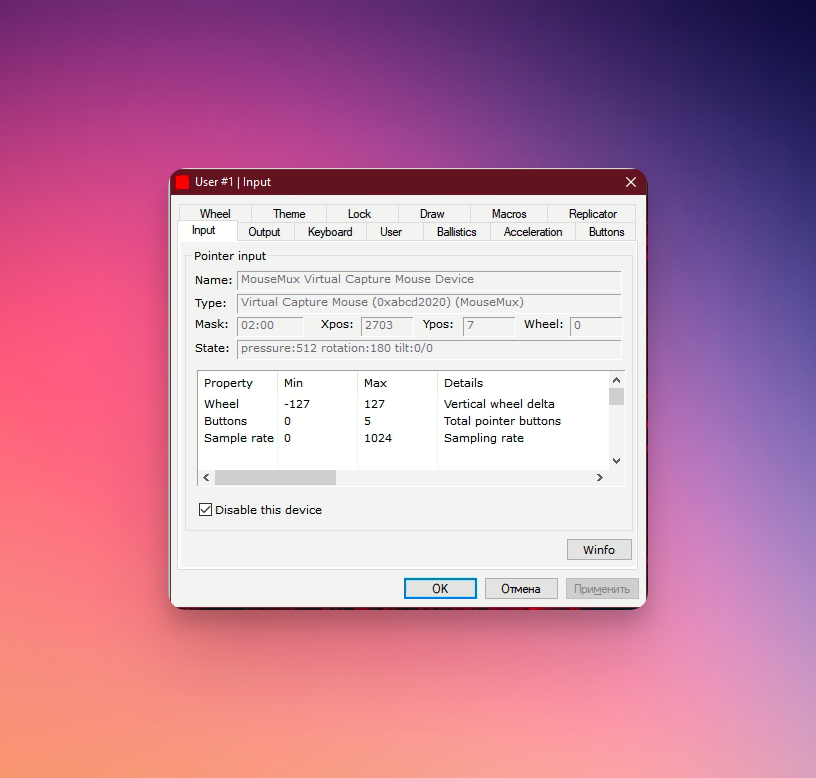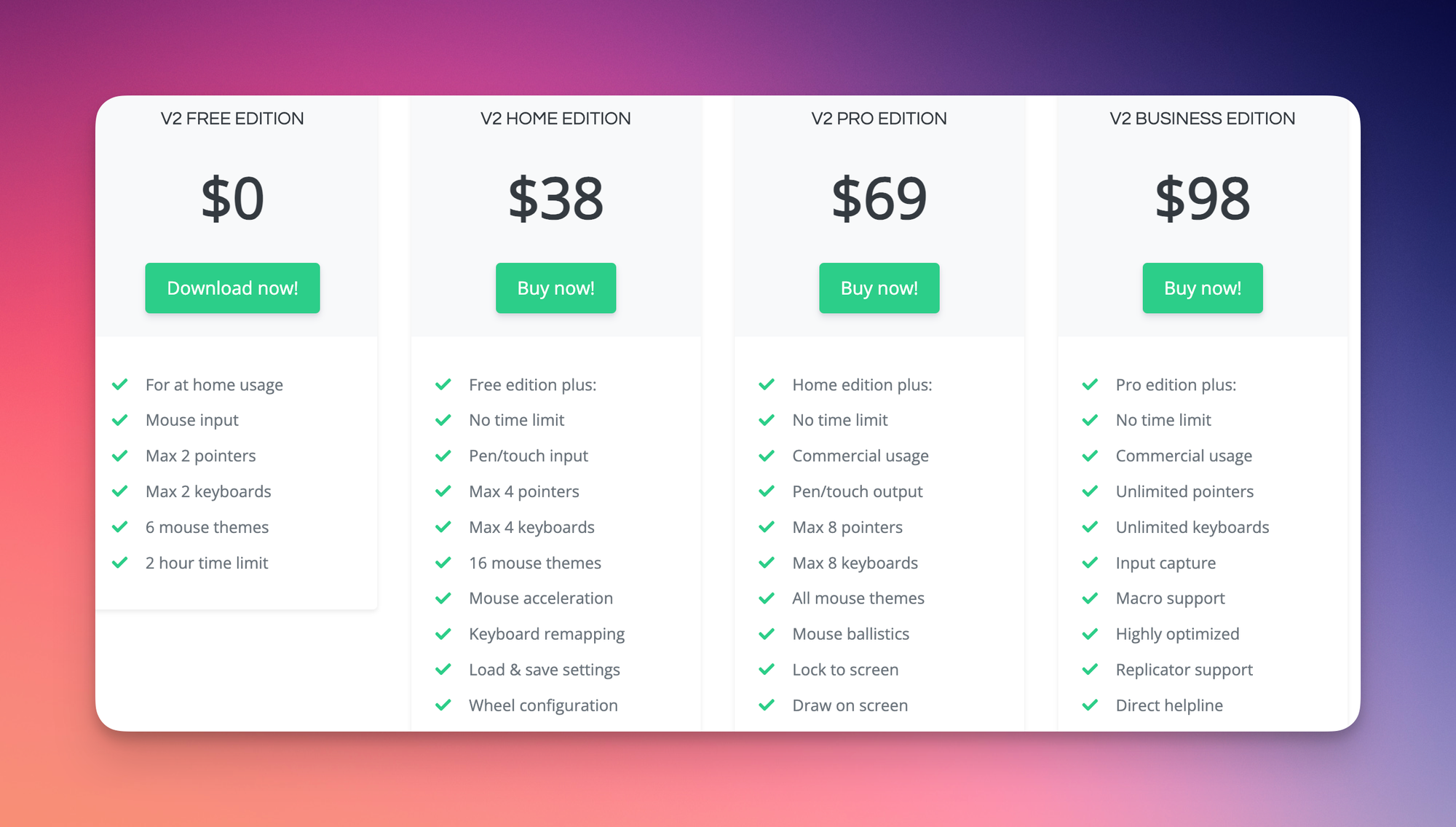On Windows, you can connect several input devices at the same time, but you won’t be able to fully use them. Alternate input only. Therefore, you need to use third-party solutions.
The need to add another cursor to control a computer rarely arises. This can be useful when showing some presentations, working together on a large monitor, and other exotic cases.
On Windows, you can connect several input devices at the same time, but you won’t be able to fully use them. Alternate input only. Therefore, you need to use third-party solutions.
Solution
Using the MouseMux utility, you can add a second, third, or as many cursors as you like. Of course, subject to the availability of the appropriate number of input devices. At the same time, there is support not only for the mouse and its analogues, but also for several keyboards.
When you first launch the utility, it will perform basic settings and measure the current speed of mouse movement. After which the main settings window will launch.
So that you understand exactly which mouse you are setting the cursor for, when it moves in the application, the corresponding line is highlighted. Each cursor has a number of its parameters.
The main one is the input method:
- Standard emulates the default Windows input method, i.e., all input devices control one cursor.
- Switched allows multiple users to work simultaneously, and each will have their cursor. But you won't be able to click in different windows at the same time.
- Multiplex works similarly to Switched, but this time there are no restrictions.

After choosing the appropriate input method, you can safely start using MouseMux. But if necessary, you can fine-tune the behavior of each cursor in a separate settings window with many parameters.

There are a lot of them, and they are needed to solve some specific problems. Therefore, below I will tell you about the most basic ones:
- Emulation of various input devices (mouse, pen, touch panel, etc.);
- Change the cursor name and statistics for each of them;
- Individual adjustment of acceleration along the axes;
- Reassigning mouse buttons and double clicks;
- Changing scroll speed;
- Change cursor color;
- Flip on X or Y axis;
- Locking the cursor to a specific monitor;
- Record and play macros.
And this is what working at a computer looks like when the Multiplex mode is activated.
Price
When you first launch the application, you can try all the functions without any restrictions on the activation time of the trial. Then you will have to pay for a license or stay on the free version.
The free version allows non-commercial use only, supports up to two cursors and keyboards, six color schemes, and two hours of use per day.

Paid plans gradually increase the number of cursors, keyboards, and also activate advanced settings. The difference between the tariffs can be seen in the screenshot above.
The minimum license cost is $38, and the maximum is $98. One-time payment.
Of course, most of us don’t really need support for two mice or keyboards at the same time. But for those who really have such a need, I have not found a simpler and more convenient solution to this problem.
